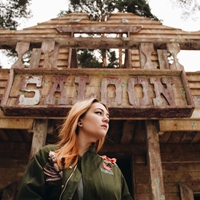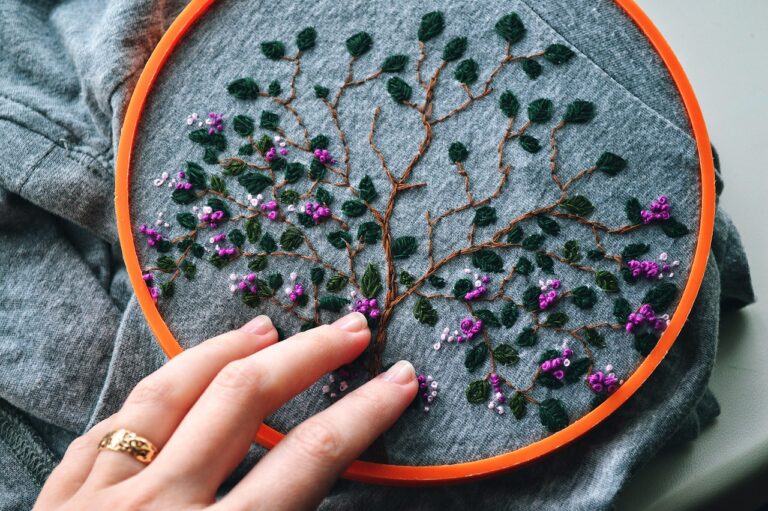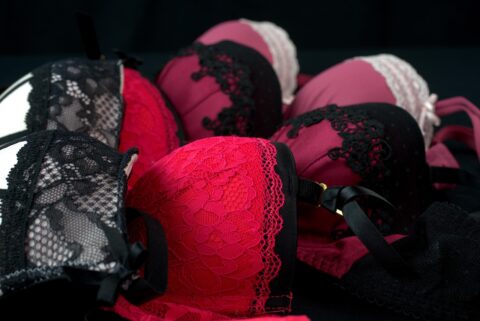Decorated clothing, like graphic print t-shirts, band hoodies, or custom tote bags, needs special care to preserve its designs. Without correct washing and drying, these prints can fade, crack, or peel.
Understanding Fabric Types
Before you even think about washing, it’s important to understand the fabric your garment is made of. Different materials have different needs, and what works for cotton might ruin a delicate synthetic blend. Always check the care label first, but here’s a quick rundown of common fabrics used for decorated apparel:
- Cotton: This natural fiber is a popular choice for t-shirts and hoodies because it’s soft, breathable, and durable. It can generally handle warmer water, but for decorated cotton, it’s best to stick to cool or cold washes to protect the design.
- Polyester: A synthetic fabric known for its durability and resistance to shrinking and wrinkling. It’s often used in activewear. Polyester holds colors well, but high heat can damage both the fabric and any decorations, so cooler temperatures are essential.
- Blends (Cotton/Poly): Combining the best of both worlds, these blends offer the softness of cotton and the durability of polyester. They are generally resilient but should be treated with the same care as pure cotton or polyester to protect the decoration.
- Rayon/Viscose: These semi-synthetic fabrics are known for their soft, silk-like feel and beautiful drape. However, they can be delicate and may shrink or lose their shape if not washed carefully. Hand washing or using a gentle cycle with cold water is often recommended.
Pre-Wash Preparations
A little prep work before washing can significantly extend the life of your decorated garments. These simple steps help protect the design from abrasion and color bleeding.
- Turn It Inside Out: This is the single most important step. Turning your garment inside out minimizes the friction the decoration experiences during the wash cycle. The print or embroidery will rub against the inside of the garment instead of other clothes, zippers, and buttons.
- Separate Your Laundry: Always separate your lights from your darks to prevent colors from bleeding onto one another. It’s also a good idea to wash decorated items with similarly textured fabrics. Avoid washing a delicate printed t-shirt with heavy items like jeans or towels, as the rougher materials can damage the design.
- Check Zippers and Buttons: Before tossing everything in the machine, make sure all zippers are zipped and buttons are unbuttoned. An open zipper can easily snag on embroidery or scratch a print.
Washing Techniques
Now that your clothes are prepped, it’s time to wash them. The right settings and supplies are crucial for keeping decorations intact.
- Choose the Right Cycle: Select the gentle or delicate cycle on your washing machine. These cycles use a slower spin speed and less agitation, which is much kinder to prints and embellishments.
- Use Cold Water: Hot water is the enemy of most decorated garments. It can cause colors to fade, adhesives to weaken (especially for Heat Transfer Vinyl), and prints to crack. Always opt for a cold water wash to preserve the integrity and vibrancy of the design.
- Select a Mild Detergent: Harsh detergents and bleaches can strip colors and damage delicate prints. Use a mild, color-safe detergent. Avoid fabric softeners, as they can leave a residue that dulls the appearance of the decoration and may break down the adhesive on some types of prints.
Drying Methods
How you dry your decorated clothing is just as important as how you wash it. High heat from a machine dryer is one of the fastest ways to ruin a print.
- Air Dry When Possible: The best and safest method is to air dry your garments. You can hang them on a clothesline or lay them flat on a drying rack. If hanging, use plastic hangers to avoid creating “shoulder bumps.” Air drying completely avoids the damaging effects of high heat and the tumbling motion of a dryer.
- If You Must Use a Dryer: Sometimes, you might be in a hurry. If you need to use a machine dryer, choose the lowest heat setting available, such as “tumble dry low” or “air fluff.” Remove the garment while it is still slightly damp and let it finish air drying. Never use a high heat setting.
Ironing Tips
Wrinkles happen, but ironing a decorated garment requires caution. Direct heat from an iron can melt, scorch, or otherwise destroy a print.
- Never Iron Directly on the Decoration: This is a golden rule. Always keep the iron away from the printed or embroidered area.
- Iron Inside Out: Just like with washing, turn the garment inside out before ironing. This allows you to iron the fabric without directly touching the design.
- Use a Pressing Cloth: For extra protection, place a thin piece of cotton fabric, like a handkerchief or pillowcase, between the iron and your garment. This pressing cloth distributes the heat more evenly and provides a protective barrier.
- Keep the Heat Low: Use the lowest heat setting that is effective for the fabric type. If your iron has a steam function, it can help release wrinkles without needing high heat.
Storage Solutions
Proper storage protects your decorated garments from environmental factors that can cause fading and damage over time.
- Avoid Direct Sunlight: Store your clothes in a cool, dark, dry place like a closet or drawer. Prolonged exposure to sunlight will fade colors and can weaken fabric fibers.
- Ensure Good Airflow: Don’t overcrowd your closet. Good air circulation helps prevent moisture buildup, which can lead to mildew and musty odors.
- Fold, Don’t Hang (Sometimes): For heavy items like sweatshirts or garments with large, heavy prints, folding is often better than hanging. Hanging can cause the fabric to stretch over time, distorting the garment and the design.
Stain Removal
Accidents happen. When they do, quick and careful action can save your favorite shirt.
- Act Quickly: The sooner you treat a stain, the more likely you are to remove it completely.
- Blot, Don’t Rub: Use a clean cloth or paper towel to blot the stain, working from the outside in. Rubbing can spread the stain and push it deeper into the fabric.
- Use a Gentle Stain Remover: Apply a small amount of mild stain remover or a mixture of gentle detergent and water directly to the stain. Avoid applying it to the decorated area if possible.
- Test First: Before applying any treatment to the main area, test it on an inconspicuous spot, like an inside seam, to ensure it doesn’t cause discoloration.
- Wash as Usual: After treating the stain, wash the garment according to the instructions above.
Conclusion
By following these steps, you can ensure your decorated garments remain a vibrant and cherished part of your wardrobe for a long time. Proper care is a small investment of time that pays off by preserving the quality and appearance of your favorite pieces.

Dorothy I. Johnson is the heart and soul of Flash Flyer Blog’s writing team. Dorothy loves storytelling and finds the extraordinary in everyday life. She has a unique voice for sharing travel stories, tech trends, wellness tips, and food finds. Her relatable style makes complex ideas easy to grasp. She also turns simple moments into captivating stories. Dorothy’s background and curiosity inspire her to make content that connects with readers. They can find either practical tips or new viewpoints in her work. When she’s not writing, she likes to explore new places. She experiments in the kitchen or dives into a new personal growth book.





